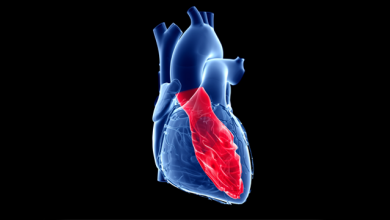Search results
Author(s):
Simon Kennon
,
Andrew Archbold
Added:
3 years ago
Patients with severe aortic stenosis who require non-cardiac surgery (NCS) present a difficult clinical problem. It is well established that their rate of postoperative cardiovascular complications is increased in comparison with patients without aortic stenosis,1–3 yet their optimal management remains uncertain. Reported prevalence rates for severe aortic stenosis range from 3.4 % in subjects…
View more
Author(s):
Kevin S Tang
,
Shoujit Banerjee
,
George Tang
,
et al
Added:
4 months ago
Author(s):
Clyde W Yancy
Added:
1 year ago
Author(s):
Pantelis Diamantouros
,
David Kandzari
Added:
3 years ago
In both randomised trials, compared with bare metal coronary stents, and in observational registries, treatment with drug-eluting stents (DES) has been associated with considerable reductions in angiographic restenosis and the need for repeat coronary revascularisation procedures. Despite these established benefits in selected patient populations, relatively little is known regarding the safety…
View more
Author(s):
Daniel S Menees
,
Eric R Bates
Added:
3 years ago
Nearly one-third of the approximately 30 million people undergoing non-cardiac surgery in the US each year have known coronary artery disease (CAD) or CAD risk factors.1,2 An estimated one million suffer peri-operative cardiac complications accounting for roughly US$20 billion in annual medical costs.3 Peri-operative myocardial infarction (MI) may affect as many as 34% of high-risk individuals…
View more
Author(s):
Oluseun Alli
,
David Holmes Jr
Added:
3 years ago
Abstract
Patients with complex and multivessel disease present challenging clinical problems in defining treatment strategies. The Synergy between PCI with taxus and cardiac surgery (SYNTAX) trial, which included both a randomised as well as a registry experience has clarified many issues. These include the extent and severity of the disease, the clinical presentation, and the metrics used for…
View more
Cardioprotected Percutaneous Coronary Intervention - A Case Study in a Stable Angina Patient
Author(s):
Tim P van de Hoef
,
Werner Mohl
,
Ahmed A Khattab
,
et al
Added:
3 years ago
Article
Author(s):
Petr Kala
Added:
3 years ago
Patients suffering acute myocardial infarction with ST-segment elevation (STEMI) require full attention of the whole STEMI network to save their lives and to improve the quality of life after a heart attack. Close cooperation among all stakeholders on a national and regional level has to be established. The emergency medical service (EMS) and direct transportation to the 24 hours a day, seven…
View more
Author(s):
Timothy Glenie
,
Peter Ruygrok
Added:
3 years ago
Abstract
As the treatment of acute myocardial infarction has evolved from conservative management to thrombolysis and, in more recent times, primary angioplasty, the incidence of ventricular rupture, in particular post-infarction ventricular septal defect (VSD), appears to have fallen. In this article we discuss the clinical presentation and investigation of post-infarction VSD, the natural…
View more
Author(s):
Neil Ruparelia
Added:
3 years ago
Transcatheter aortic valve implantation (TAVI) is now the accepted treatment option of choice for patients presenting with severe symptomatic aortic stenosis who are deemed to be inoperable or of high surgical risk.1,2 Short- and intermediate-term outcomes have been promising3–5 and with increasing institutional and operator experience combined with technological advancements there has been…
View more












